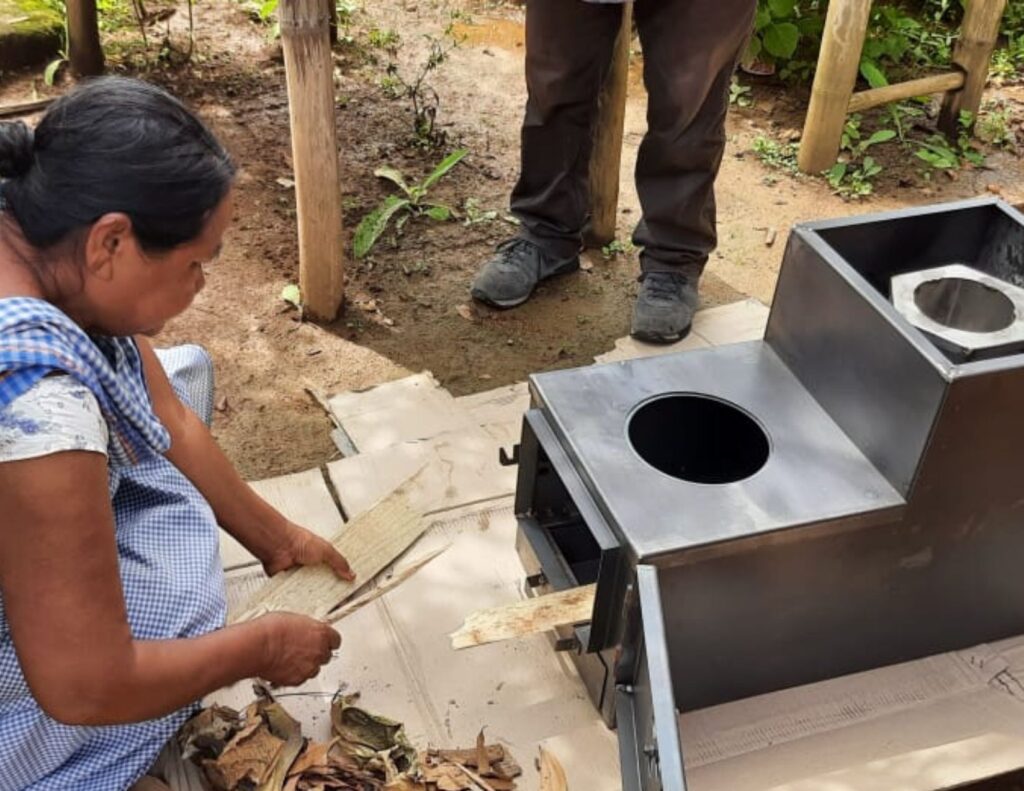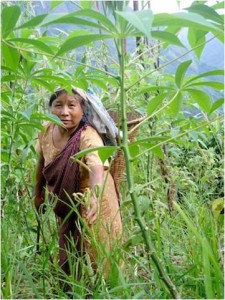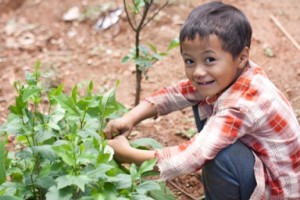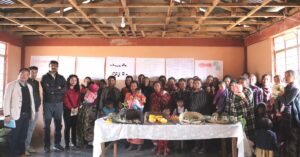In many of the indigenous communities from Meghalaya and Nagaland, firewood continues to be the main source of fuel to power houses. Alternate fuels like charcoal, which are burnt in small metal stoves are seen as secondary to firewood while the use of natural gas and electricity is irregular in many homes owing to high expenses. However, with the increase in population directly equating to increase in demands for firewood, there is fear, confirmed by experience, that existing landscapes accessible to communities may not be able to sustainably meet the demands.
Acknowledging the need for finding better alternatives or innovations in order to cut down the excessive use of firewood in rural homes, NESFAS collaborated with Himalayan Rocket Stove Company in 2019 for a demonstration of HRS’s ECO 1 model in Mawhiang village, East Khasi Hills, Meghalaya. This initiative became one of first activities under the innovations component of the “No One Shall Be Left Behind” initiative funded by the REC. The community gave quite a positive feedback to the ECO 1 model which provided ample space and water heating properties while consuming just 2 kilos of firewood in an hour. The only problem was the colossal size of the ECO 1 model.
As such, over the past few years, the HRS Company, in consultation with NESFAS and its communities have worked in developing a much smaller version of the ECO 1 model. This culminated to the production of a new model that is fuel efficient (can run in full power for 3 hours on just 2 kilos of firewood), safe and sturdy enough to last for years with little to no maintenance. The new small space friendly stove which were distributed and installed in August this year served its purpose as a water and space heater while also coming with two cooking stations.
The first batch of the 39 stoves provided by HRS Company was installed in community halls and Mei-Ramew Cafes of NESFAS’ partner communities. Bah Khraw Wahlang, Advisor, Innovation and Community Empowerment of NESFAS stated that this innovative program has been initiated to cut down the excessive consumption of firewood among rural communities. It addresses the issue of smoke that is prevalent in community kitchens while providing additional benefit of acting as a space heater in community halls for meetings during winter or rainy days.
Ever since these stoves have been installed in community centres and Mei-Ramew cafes, the community members have been blown away by the performance of the stove; especially with the fact that the stove virtually produces no smoke indoors. And while at the moment, the stoves have been rolled out only at the community level, Bah Khraw believes that if HRS can provide a cheaper prototype, majority of the community members would be looking to buy it and use it in their own homes. “This in turn would revolutionize community kitchens.” Bah Khraw added.

Similar positive feedback have also been given by owners of Mei-Ramew Cafes who state they have all benefitted hugely from the installation of the HRS stoves in their cafes. Most of the Mei-Ramew café owners agree that the cooking stations of the stove are much more efficient and less time consuming than the other alternatives of cooking gas or charcoal stoves.
“Compared to any other cooking method, the stove is more efficient as it is time saving and multiple dishes can be cooked at the same time.” said Kong Dial Muktieh, proprietor of Mei-Ramew Cafe Khweng Ri-Bhoi.
On top of its extreme efficacy as a cooking stove in these cafes, the stove also provides an excellent heat source for the whole café and community halls during the cold months of winter and spring.
“Apart from giving us an easy means to warm foods in winter, the installation of the stove provides heat to the entire room.” added Kong Sibiana Lyngdoh from Ladmawphlang village, East Khasi Hills





